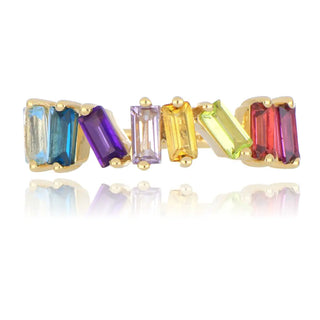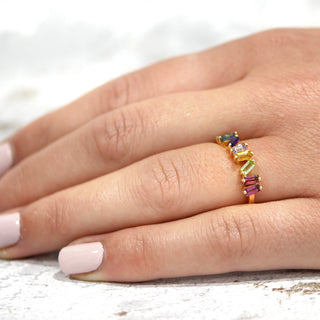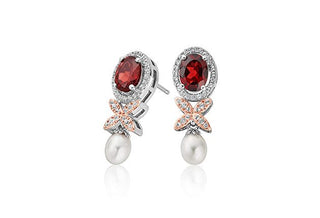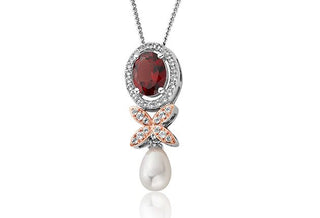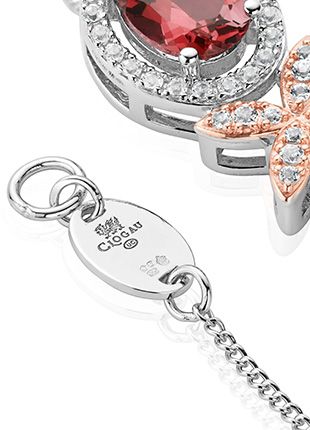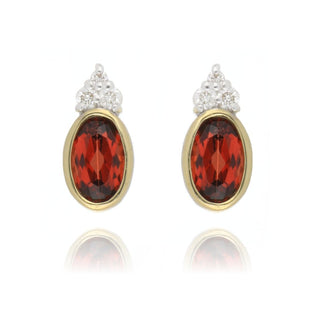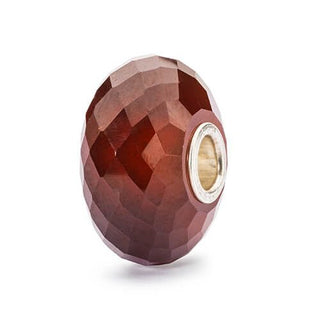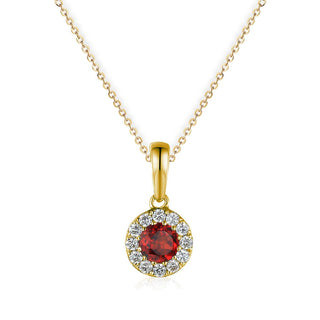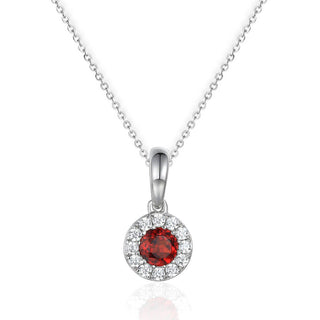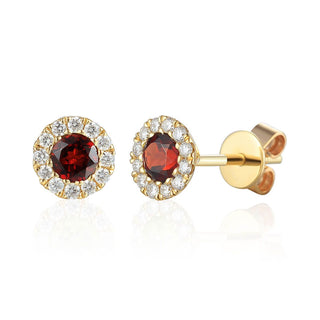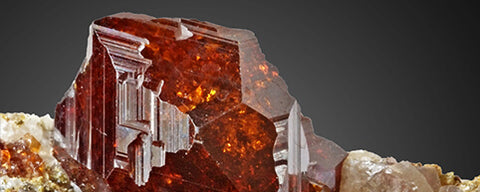
The beautiful garnet gets its name from the Latin “garantus”, meaning pomegranate, because the seeds of the pomegranate fruit are a deep glistening crimson colour, much like these gems. Although commonly associated with this rich red colour, garnets are available in a stunning array of colours, each with their own name, some of which, such as mandarin garnets are very rare.
Garnet is the birthstone associated with a January birthday, and is also the stone used to celebrate a second wedding anniversary, as such it makes the perfect gift for someone born in January or celebrating their second wedding anniversary.
History and Meaning
A wealth of folklore and legend surround garnet gemstones. They are generally associated with bringing good luck and protection, but a bad deed committed while wearing the stone is believed to bring the wearer bad luck.
The Native American Indians, South American Indians, Aztecs, African tribal elders, and the Mayans considered garnets to be sacred, and believed that they could expedite the healing of wounds. Ancient warriors believed that this blood-coloured stone would protect them from getting wounded, decrease their vulnerability, and make their weapons more deadly. Asiatic tribes wore red garnet gemstones for protection and used small garnet gemstones as weapons, launching them at their enemies with sling bows, and shooting them from guns like bullets.
Renowned for their beauty, strength and abrasive qualities, garnets have been used as far back as the Bronze Age. In ancient Egyptian times, the necklaces of the pharaohs were studded with red garnets, which were entombed with their mummified remains as treasured worldly possessions. A notable example of a garnet necklace was found in an Egyptian grave dating back to 3000 B.C.
Garnets were used in Sumeria as far back as 2100 B.C. and in Sweden between 1000 and 2000 B.C. They were popular in ancient Greek and Roman civilisations and have had a strong presence in European history, loved by the Victorians for their rich colours, and prized by generations of monarchs. The King of Saxony is said to have had a garnet of over 465 carats.
Characteristics
Garnets, although typically associated with red gemstones, come in a wide range of colours and varieties. Each stone has a different chemical composition, which determines its individual physical properties. What we refer to as a garnet, is actually a group of silicate minerals that share a similar structure. Garnets are a very durable gemstone, measuring 6.5-7.5 on the Mohs scale of hardness, which makes them perfect for frequent wear, in rings and other favourite jewellery.
Some of the more popular varieties of garnet are almandine, andradite, grossular, pyrope, spessartine, demantoid and uvarovite.
Almandine garnet is the most common. It is usually opaque and therefore not fit for gemstone use. Only the less common transparent dark red forms of almandine are used as gemstones.
Andradite is one of the rarest types of garnet. There are no major sources of andradite in the world, but smaller deposits can be found in Italy, Russia, Afghanistan, and Iran.
Grossular garnets come in every colour except blue and are even sometimes colourless. The orange variety is known as Hessonite, and the vibrant green stones, known as Tsavorite.
Pyrope garnets typically feature the intense deep red colour that most people associate with garnets and are the only variety that consistently display red in naturally occurring samples.
Spessartine garnet is one of the lesser known and rarer varieties of garnet. These gems can be found in various shades of red and orange. The ones that feature a bright orange colour are commonly known as Mandarin garnets and are quite rare.
Demantoid garnet was first discovered in Russia's Ural Mountains in 1851, this vivid green garnet is the rarest and most valuable variety of garnet.
Uvarovite garnet is also rare. It is emerald green in colour and the only consistently green Garnet. Named after a Russian statesman, it is often confused with the precious emerald gemstone.
Sources
Garnet gemstones are found all over the world, although some varieties are rarer and more limited in availability than others. Most of the garnets used in jewellery today come from Africa, namely Kenya, Tanzania and Madagascar, with other notable sources including the United States, the Czech Republic, Greece, Russia, Sri Lanka, Myanmar, Australia and India.
Bohemia, now a part of Czechoslovakia, was once a valuable source for garnet gemstones, with a vibrant industry known for cutting, polishing, and mounting garnets in a particular style, set close to each other, resembling a pomegranate. Many Bohemian castles and churches had magnificent interiors adorned with garnet, many examples of which can still be seen today in the Czech Republic.
Our jewellery
Whether you are looking for a second wedding anniversary gift, a birthday present for someone born in January, or you just want to treat yourself, or a loved one, to a beautiful piece of garnet jewellery, you have come to the right place.
Allum and Sidaway are experts in the jewellery business and will guide you effortlessly through the selection and purchase of your jewellery. We have an exquisite and expansive range of necklaces, earrings, rings, brooches and more that will take your breath away.
Trust us to do what we do well. Let our amazing team share their vast knowledge and experience with you, so that you can relax and enjoy the experience of choosing a perfect gift.
We look forward to welcoming you to our beautiful stores.
